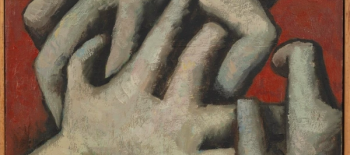Exhibition: After the Great War. A New Europe 1918-1923
When did the First World War really end? How many new countries appeared on the map then? What was the everyday life of Europeans like in the post-war years? Can the events of a hundred years ago be similar to the present situation in the world?
These and other questions are answered by the outdoor exhibition After the Great War. New Europe 1918-1923, which will be on display on 18-25 September 2023 at the Esplanade Solidarność 1980 next to the European Parliament in Brussels.

Prepared by the European Network Remembrance and Solidarity (ENRS) in cooperation with an international group of historians, the exhibition summarises the tumultuous beginnings of the interwar period, with particular emphasis on the history of East-Central Europe.
Over 200 archive and multimedia materials – pictures, maps, and films – together with individual stories of those who lived then present a complex, yet coherent picture of a New Europe. The main goal of the travelling display is to illustrate the scale of the political changes and their impact on current politics as well as to reveal different national memories.
– We want to show that the consequences of some phenomena from 100 years ago are still felt today. By juxtaposing various interpretations of the processes that took place in our region after the Great War, we can also present the different sensitivities of individual nations and the diversity of images of this conflict preserved in collective memory. – says prof. Jan Rydel, coordinator of the Polish side in the European Network Remembrance and Solidarity (ENRS).
The exhibition aims to present well-documented facts in an original and refreshing way by highlighting their mutual connections and weaving them into one narrative, considering multiple perspectives.
The First World War (1914–1918) completely changed the face of the continent. On the ruins of four superpowers, a dozen or so new states emerged. Nearly all borders were redrawn, often as a result of armed conflicts that occurred in the five years following the official end of the war. In many places, these processes continued until around 1923. The result was the emergence of what is now known as ‘New Europe,’ a term first coined by Czechoslovak president Tomáš G. Masaryk. For some nations, the outcome of the war was seen as a profound tragedy, while for others, it marked the culmination of their efforts in the fight for independence. However, all of them were united by their shared commitment to rebuilding in the aftermath of war damage and the concurrent modernization efforts, which occurred not only on the political front but also within the realms of society, economy, and culture.
The exhibition After the Great War. New Europe 1918–1923 has been presented for five years as part of an international tour. It was displayed in twenty-two cities over thirteen countries so far: Prague (Czech Republic), Sarajevo (Bosnia and Herzegovina), Bratislava (Slovakia), Verdun (France), Berlin and Weimar (Germany), Rijeka (Croatia), Vienna (Austria), Kaunas and Vilnius (Lithuania), Tallinn (Estonia), Darmstadt (Germany), Dublin (Ireland), Sibiu (Romania), Trieste (Italy), Wroclaw, Cracow, Warsaw, Poznan, Lublin, Szczecin and Gdansk (Poland).
More information about the project, the experts involved in the preparation of the exhibition and the international tour can be found at: www.enrs.eu/afterthegreatwar
The exhibition is accompanied by a catalogue in English and Polish. The publication in electronic format is available at: https://enrs.eu/publication/after-the-great-war-exhibition-catalogue-pl



